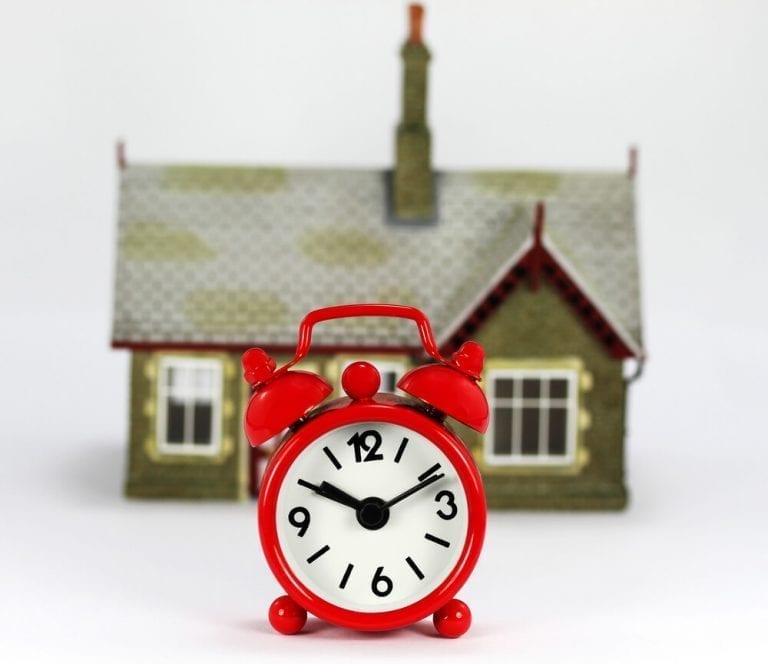Interest rates are going up, so it’s time to seriously consider refinancing your home loan. Or if you want to buy a house, it would be wise to seriously consider doing it soon.
How seriously? Consider this example and hold onto your wallet.
The median price of a home in November of 2021 was $353,900, according to the National Association of Realtors (NAR). The average interest rate on a 30-year fixed mortgage was 3.27%.
If you put 10% down, your monthly payment would be $1,805.
If the interest rate ticked up one point to 4.27%, the monthly payment would be $1,987.
That’s a $182 a month difference, or enough to buy a Big Mac for dinner every day of the month and still have a few bucks left over for fries.
If you paid all 360 months of the mortgage, that one-point interest hike would take an additional $65,137 out of your wallet, or more than enough to buy a Mercedes Benz GLE SUV.
If that doesn’t make you seriously consider acting soon, you must not like hamburgers or luxury SUVs.
So how did we get to this pivotal point?
Thank the Federal Reserve, which sets the interest rates that affect almost every financial transaction in America. The actual interest rate it sets is what banks charge each other to lend Federal Reserve funds overnight. The rates consumers pay are based on that number.
The Fed cut the rate to zero when the housing market collapsed in 2008. It stayed there until 2015, when the economy stabilized enough to start increasing rates to historical norms.
Each time the Federal Reserve rate moves up, so does the interest rate on finance charges for credit cards, mortgages and, eventually, student loans.
The first rate hike came in late 2015, then there was a lull, but that ended in a big way. There have been five total hikes, the latest of which came in December 2017 when rates jumped to a range of 1.25% to 1.5%. It’s now up to 1.7% and more hikes are on the way.
“When interest rates start to rise, they typically rise quickly over about eight to 12 quarters. That is what history tells us,” said Dr. Jeff Engelstad, a clinical professor at the Burns School of Real Estate and Construction Management at the University of Denver.
How High Might Interest Rates Go?
“Anybody’s guess,” Engelstad said. “Typically, 3% to 3.5% could be expected. Since rates are so low, maybe 1.5% to 2.5% in total.”
One thing is certain – you can kiss the days of zero interest goodbye. The Fed slashed rates after existing home sales plunged by almost 3 million homes from 2007 to 2008.
Almost 8 million people lost their homes to foreclosures, which glutted the market with houses. From the low of 4.12 million home sales in 2008, sales crept up to 5.78 million in 2017.
Prices have followed suit. The median sales price of a house went from $204,400 in 2009 to $315,200 in 2017, according to the Federal Reserve Bank of St. Louis.
The NAR reported the median house price increased 5.8% in 2017 to $246,800. There is a discrepancy between what the Fed says a house cost and what realtors say, but there is no disagreement that prices are going up.
They have for six straight years. The Fed has indicated it will raise interest rates three times in 2018.
Put those factors together and the question for many consumers shouldn’t be when they should refinance or buy a house (soon), but what type of home loan should they get.
Types of Home Loans
The options will be a fixed-rate home loan, where you lock in an interest rate that never changes, or a variable rate loan, which will change. Adjustable-rate mortgages (ARMs) have introductory rates for a set period such as five years, then rates go up or down depending on the market.
There are a variety of ARMs, and the main advantages they offer are lower introductory rates and flexibility. If interest rates fall, you don’t have to refinance in order to take advantage of the drop.
But you are at the mercy of market fluctuations, and all signs point to the market fluctuating higher in the coming years.
Experts say that if you choose an ARM, attack it while the interest is at its low introductory rate. If you aren’t able to pay a bulk of the debt early, go with the fixed-rate loan.
“If you decide to refinance, and if you are serious about getting out of debt, choose a fixed-rate option with the lowest effective rate possible,” Engelstad said. “Your effective rate takes into consideration the points and fees and length of time you actually plan to repay the debt.
“Interest rates are not important. Effective rate is.”
Interest rates are the foundation of the loan, but they don’t reflect the true monthly cost. Besides the amount of money borrowed, you must also factor in origination fees, mortgage insurance premiums, closing costs and discount points. All those will determine your annual percentage rate (APR).
“If your lender cannot counsel you based on effective cost of borrowing, then get another lender,” Engelstad said. “Choose a 30-year option and make a 10-year payment if you can.
“Rates are going up. Would you rather be a lender or a borrower? Get out of debt and you become the lender.”
You’ll also have more money to buy Big Macs and a lot of other things.
Sources:
- ND. United States Home Sales. Retrieved from https://tradingeconomics.com/united-states/new-home-sales
- ND. Median Sales Price of Houses Sold for the United States. Retrieved from https://fred.stlouisfed.org/series/MSPUS
- ND. Number of existing homes sold in the United States from 2005 to 2018. Retrieved from https://www.statista.com/statistics/226144/us-existing-home-sales








